Pharmaceutical packaging is divided into three main types: primary, secondary, and tertiary packaging.
Primary packaging directly holds the drug (e.g., blister packs, bottles).
Secondary packaging groups primary packages (e.g., cartons).
Tertiary packaging is used for bulk handling and transport (e.g., shipping boxes and pallets).
Solid Oral Dosage Forms (Tablets & Capsules)
Blister Packs
Blister packs protect tablets and capsules by sealing each dose in individual plastic or aluminum cavities. These packs consist of a thermoformed plastic sheet that creates pockets for each pill, backed by aluminum foil or paper.
These packs come in two main types: push-through and peel-push. Push-through packs let you press the tablet through a foil backing. Peel-push packs require you to peel back the foil first before pushing the medication out.
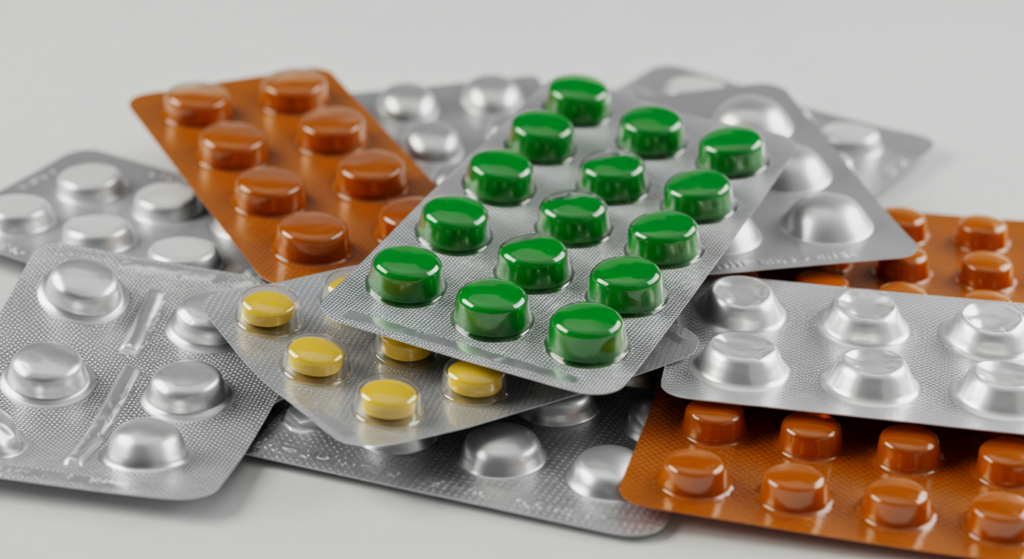
Strip Packages
Strip packages contain multiple doses of medication sealed between two flexible films. Unlike blister packs with rigid compartments, strip packaging uses heat-sealed pouches that you tear open individually.
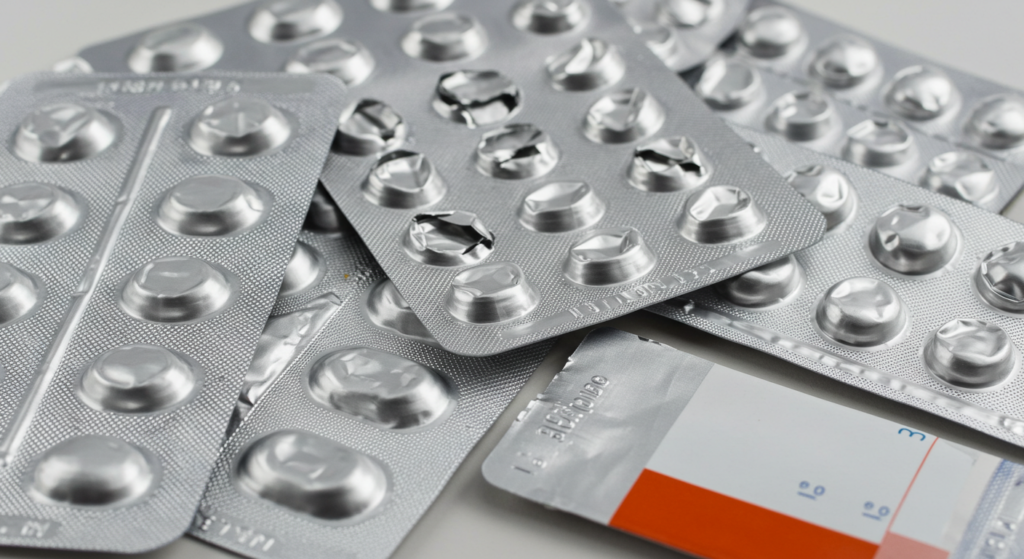
Bottles and Closures
Pharmaceutical bottles remain the most common container for bulk tablets and capsules. These bottles come in sizes ranging from 30-count to 1,000-count containers.
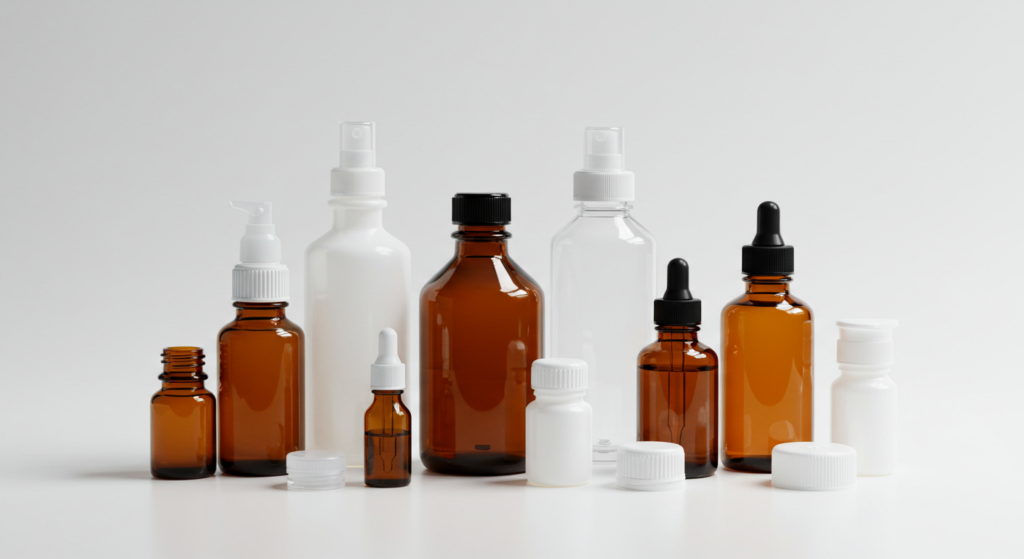
Liquid, Parenteral, and Injectable Dosage Forms
Vials
Vials are small glass or plastic containers that hold injectable medications. Single-dose vials contain exactly one dose and must be discarded after use. Multi-dose vials hold several doses and include preservatives to prevent bacterial growth between uses. Vial sizes range from 1 mL to 100 mL, with 10 mL and 20 mL being most common.
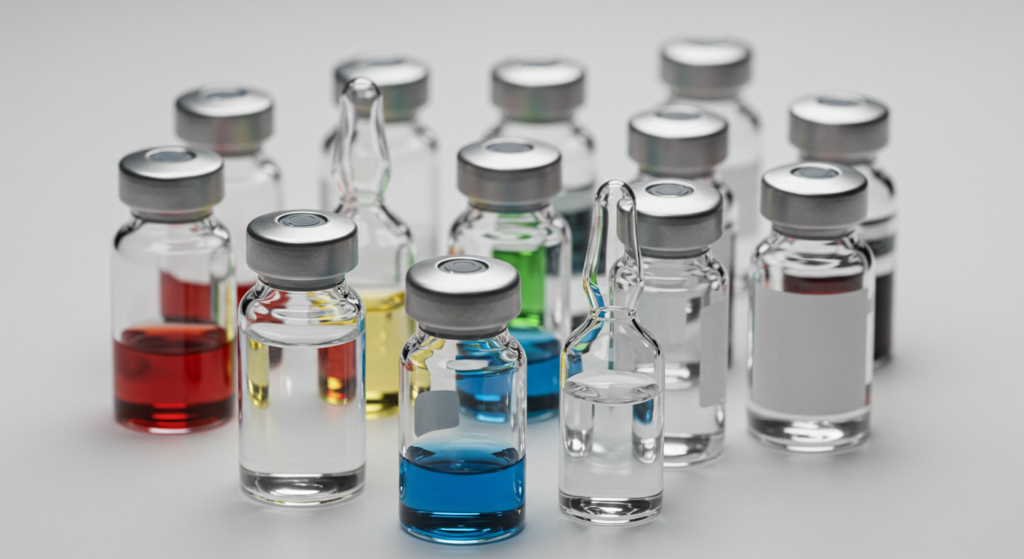
Ampoules
Ampoules are sealed glass containers that hold 1 to 20 mL of sterile medication. Unlike vials with rubber stoppers, ampoules have a breakable neck that you snap off to access the contents. Once opened, you must use the entire contents immediately.
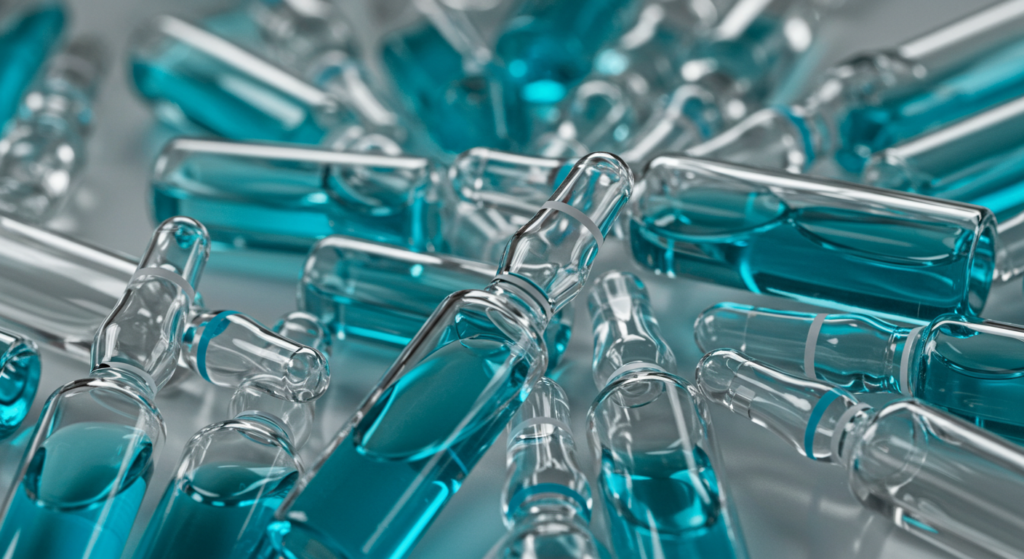
Pre-filled Syringes and Cartridges
Pre-filled syringes contain exact doses of injectable medications ready for immediate use. Glass or plastic syringes come with attached needles or luer-lock connections.
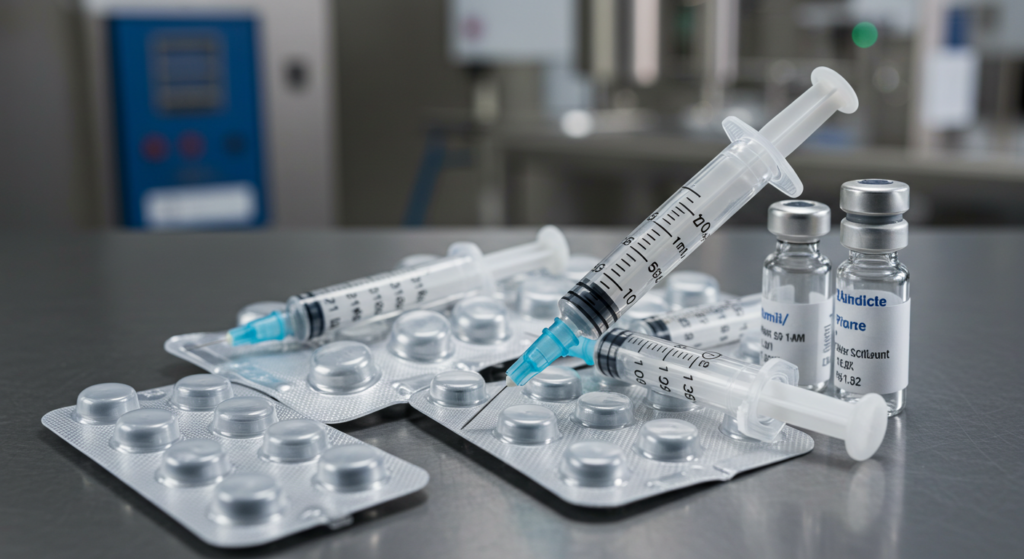
Bottles for Oral Liquids
Multi-dose bottles are the standard format for oral liquid medications such as syrups, solutions, and suspensions.
Because the bottle itself does not facilitate dosing, these products are almost always accompanied by a separate dosing accessory, such as a graduated measuring cup, an oral syringe, or a spoon, which is provided in the secondary packaging.
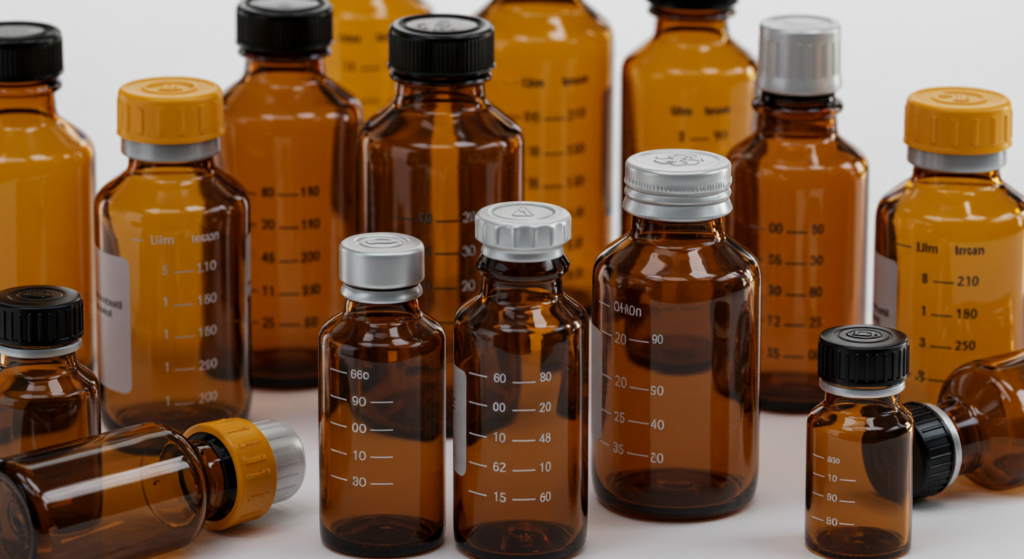
Semi-Solid Dosage Forms (Creams, Ointments, Gels)
Collapsible Tubes
Collapsible tubes are the primary containers for topical creams, ointments, and gels. The user dispenses the product by squeezing the tube, and the design helps prevent “suck-back” of air and contaminants into the remaining product.
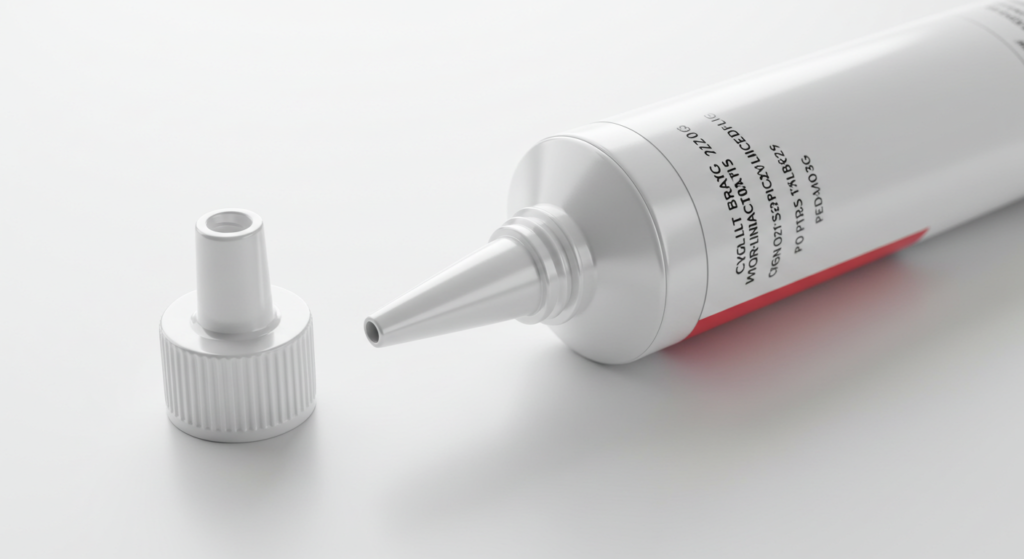
Jars and Pumps
Wide-mouthed jars, made of either glass or plastic, are used for some creams and ointments, particularly for bulkier quantities. However, they are more susceptible to contamination from repeated finger-dipping. Pump dispensers, which provide a metered dose with each actuation, are an increasingly popular and more hygienic alternative for lotions, creams, and gels.
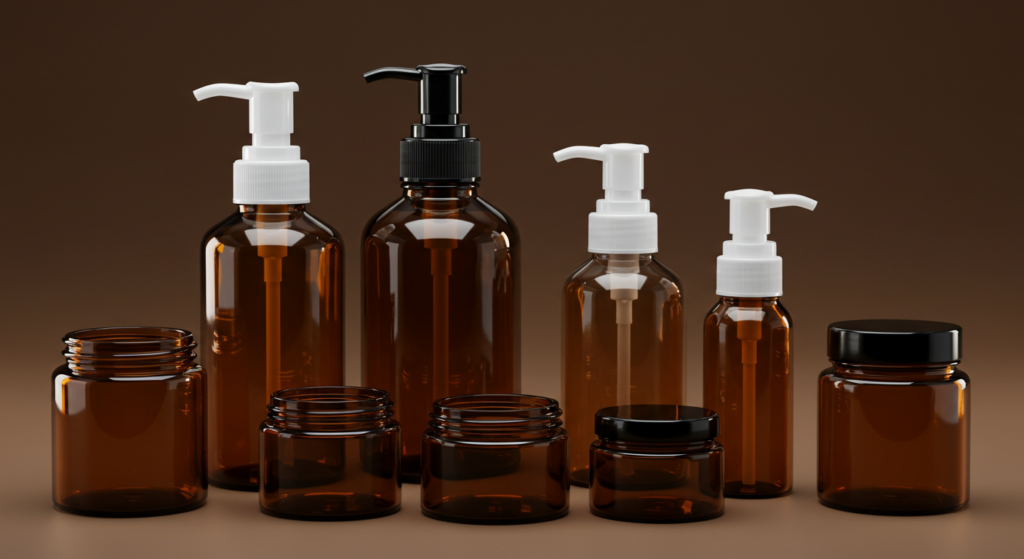
Paper and Paperboard
Paper cartons protect primary packages during distribution and provide space for required labeling.
Corrugated boxes serve as tertiary packaging for shipping multiple units.
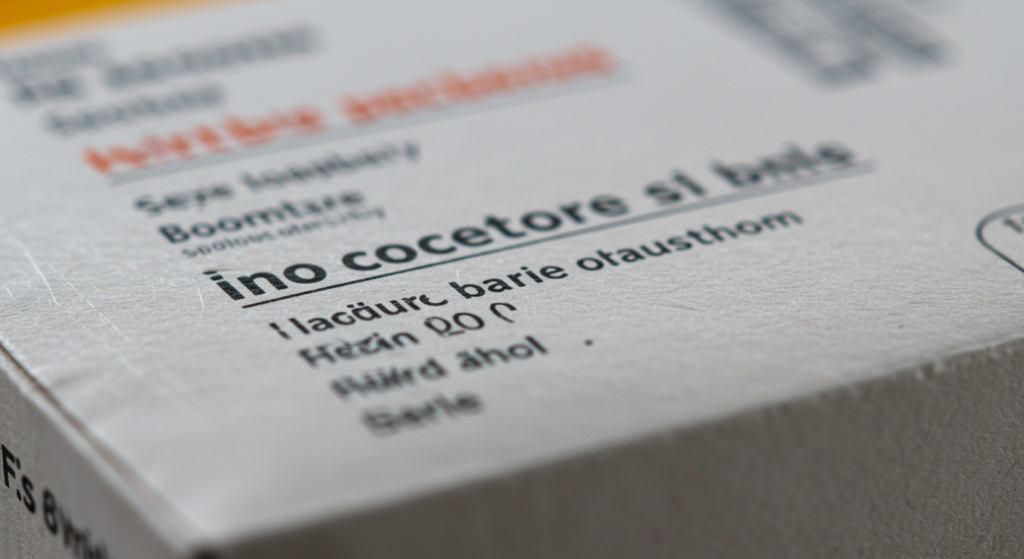
Materials of Pharmaceutical Packaging
Glass
Glass remains the gold standard for pharmaceutical packaging due to its chemical inertness and barrier properties.
- Type I (Borosilicate Glass): Type I borosilicate glass contains 80% silica and 13% boric oxide, making it highly resistant to chemical attack. This glass withstands extreme temperature changes from -80°C to 500°C without breaking. Injectable drugs, vaccines, and biologics require Type I glass for stability.
- Type II (Treated Soda-Lime Glass): Type II glass starts as regular soda-lime glass treated with sulfur dioxide to remove surface alkali. The treatment makes Type II glass suitable for acidic and neutral parenteral preparations.
- Type III (Soda-Lime Glass): Type III soda-lime glass works for oral liquids and powders that don’t require high chemical resistance. This glass contains 70% silica, 15% sodium oxide, and 10% calcium oxide. The alkaline surface makes it unsuitable for pH-sensitive medications.
Plastics
Plastics offer shatter resistance, light weight, and design flexibility for pharmaceutical packaging. Different polymers offer varying levels of protection, flexibility, and chemical compatibility.
- Polyethylene (PE): Polyethylene comes in low-density (LDPE) and high-density (HDPE) varieties. LDPE provides flexibility for squeeze bottles and dropper tips. HDPE offers rigidity for prescription bottles and caps.
- Polypropylene (PP): Polypropylene withstands autoclave sterilization at 121°C, making it ideal for pre-filled syringes and IV bags. The material offers better clarity than polyethylene and resists stress cracking.
- Polyethylene Terephthalate (PET): PET bottles offer glass-like clarity with 10 times better impact resistance. The material provides excellent gas barrier properties, blocking 95% of oxygen transmission compared to other plastics.
- Polyvinyl Chloride (PVC): PVC forms the backing for 90% of pharmaceutical blister packs due to excellent thermoforming properties. The rigid material protects tablets while allowing easy push-through access.
Metals
Metal packaging provides ultimate barrier protection for pharmaceutical products.
- Aluminum: Aluminum is the predominant metal used in pharmaceutical packaging, valued for its ability to provide a complete barrier to light, moisture, oxygen, and other gases.



